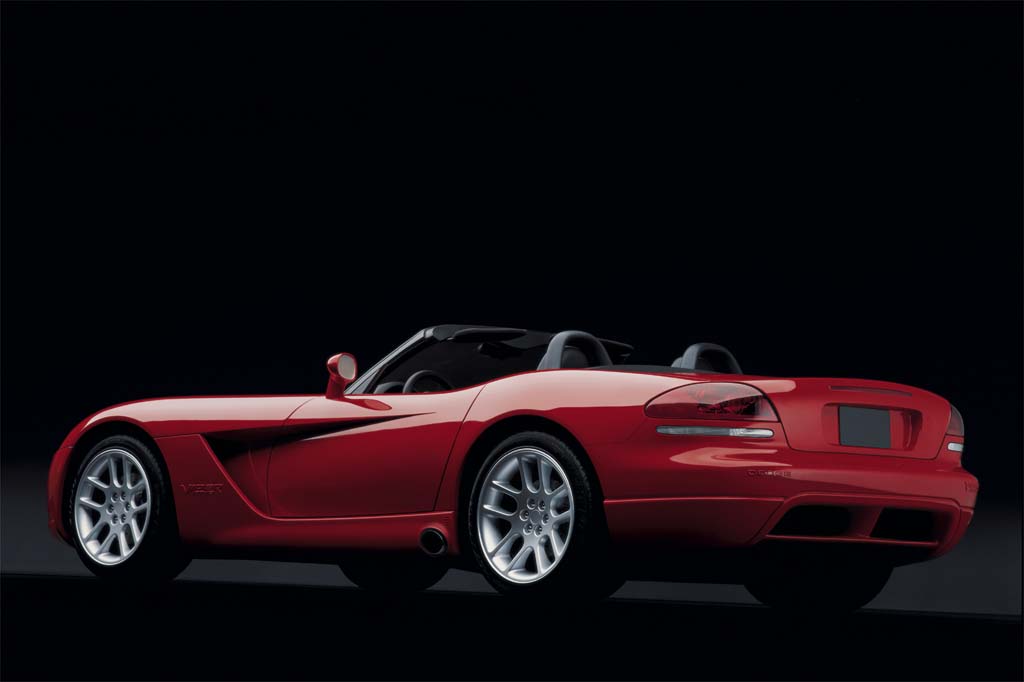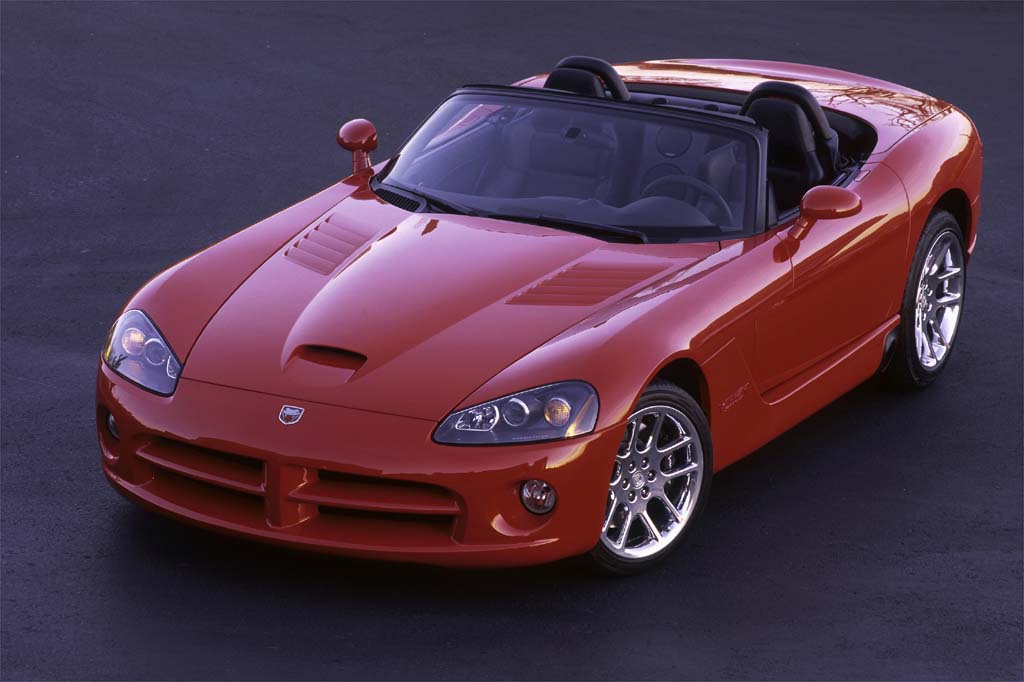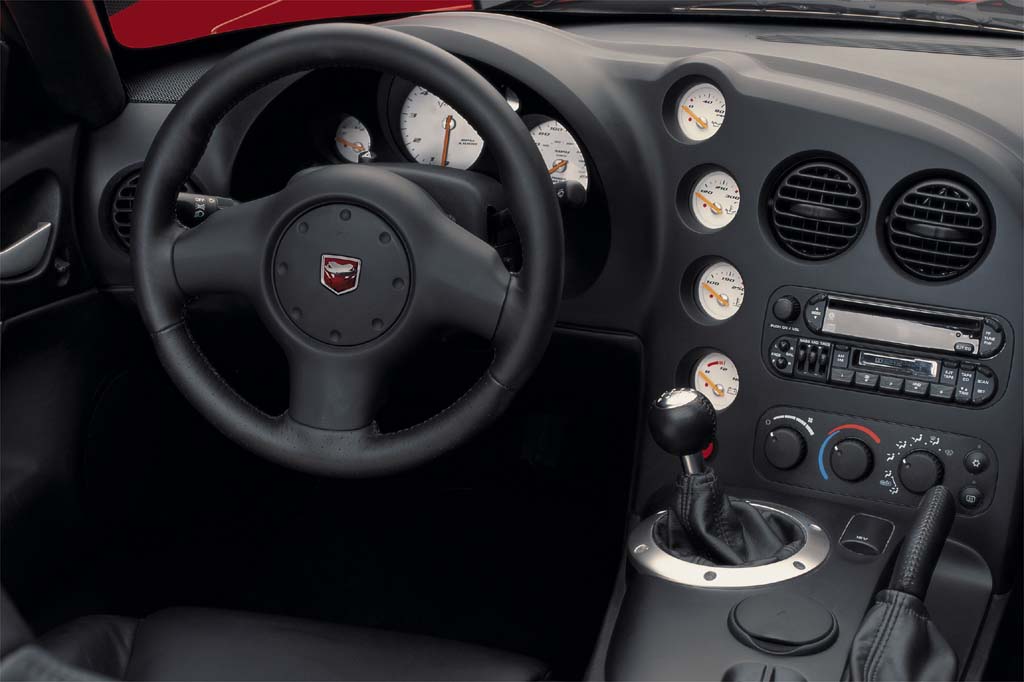| Premium sporty/performance car; Built in USA |
|
|
| Good condition price range: $27,700 – $41,500* |

2005 Dodge Viper

2003 Dodge Viper

2003 Dodge Viper

2003 Dodge Viper
| Pros: |
|
| Cons: |
|
Simply put, Viper is an emotional statement that makes little sense for daily transportation–rendered only slightly rational by the improved 2003 version. A Chevrolet Corvette, base Porsche 911, or even a Mustang Cobra, can match the Viper’s usable street performance at lower cost and with much more refinement.
Overview
Dodge redesigned America’s high-performance champ for 2003, giving the two-passenger Viper new styling, new engineering–and even more power than before. Gone were the GTS coupe and RT-10 convertible, with its cross-body roof hoop. Badged SRT-10, the Viper was now a true convertible with a manual folding top and an electrically heated glass rear window.
Wheelbase grew by 2.6 inches, compared to the 1992-2002 Viper, but overall length shrunk about an inch and curb weight dropped slightly. When the roof was lowered, the folding convertible top’s rigid center section doubled as a tonneau panel.
Viper retained its front-mounted V10-engine/rear-wheel-drive layout, but the V10 was a new design of 8.3 liters and 500 horsepower, versus the previous 8.0 liters and 450 hp. As before, the sole transmission was a six-speed manual. While ABS was standard, this two-seater maintained an aversion to high tech by not offering traction/antiskid control. No side airbags were available, either.
In the redesigned interior, the tachometer sat directly before the driver, with a 220-mph speedometer to the right. Standard equipment included leather-and-faux-suede seats; a tilt steering column; power-adjustable clutch, brake, and accelerator pedals; power windows; and air conditioning. Tires were run-flats on 18-inch front wheels and 19-inch rears. Side-mounted exhaust pipes returned from the original Viper, and xenon high-intensity-discharge high- and low-beam headlamps were standard. Sports-car rivals included the Acura NSX, Chevrolet Corvette and Porsche 911, but nothing was quite like the muscular rear-wheel-drive Viper.
Yearly Updates
| 2004 Viper America’s most powerful production car stood pat for 2004, except for new trunk carpeting and red-colored brake calipers. |
| 2005 Viper Two new colors became available on 2005 models: Yellow and Copperhead Orange. Little else changed. |
| 2006 Viper Dodge revived the coupe body that had been offered on pre-2003 Vipers to join the soft-top roadster. The Viper’s V10 engine now was rated 510 horsepower (an increase of 10). Later in the model year, Sirius satellite radio joined the options list. |
| 2007 Viper Viper skipped the 2007 model year. |
| 2008 Viper Viper returned for the 2008 model year with a 600-hp version of its V10 engine, a gain of 90 hp. A navigation system was added as an option. |
| 2009 Viper Newly available on Viper coupes for 2009 was an ACR package, which included aerodynamic improvements, performance suspension, and other race-track-ready hardware. |
| 2010 Viper The 2010 Dodge Viper entered the final year in its current design with only minor changes. |
